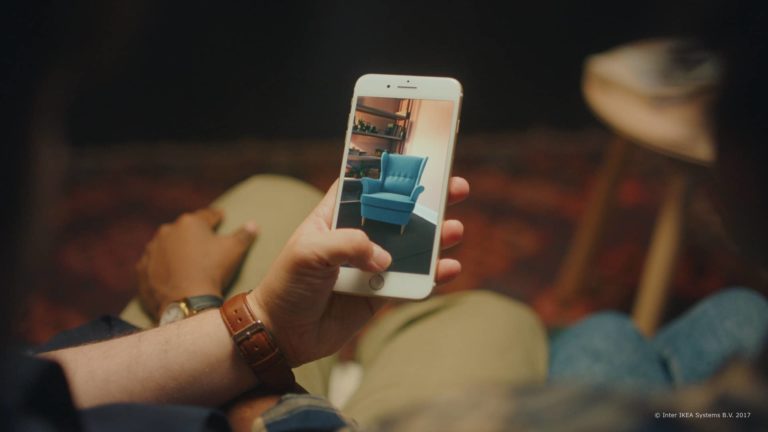
AR continues to evolve and take shape. Like other tech sectors, it has spawned several sub-sectors that comprise an ecosystem. These include industrial AR, consumer VR, and AR shopping. Existing alongside all of them – and overlapping to some degree – is AR marketing.
Among other things, AR marketing includes sponsored AR lenses that let consumers visualize products in their space. This field – including AR creation tools and ad placement – could grow from $2.78 billion last year to $9.85 billion by 2026 according to ARtillery Intelligence.
Factors propelling this growth include brand advertisers’ escalating affinity for, and recognition of, AR’s potential. More practically speaking, there’s a real business case. AR marketing campaigns continue to show strong performance metrics when compared with 2D benchmarks.
But how is this coming together? And what are best practices? These questions were tackled in a recent report by ARtillery Intelligence, containing narrative analysis, revenue projections, and campaign case studies. It joins our report excerpt series, with the latest below.
Near and Far
Picking up where we left off in last week’s report excerpt, there’s a big subdivision in AR marketing involving lenses (e.g., 3D product visualization) and visual search. These map to the main subdivisions in the broader digital marketing world: display and search advertising.
And just like display and search advertising’ historical development on the web, their AR counterparts will develop in different timelines. Display advertising was out of the gate first (like AR lenses), before search advertising developed as a “high-intent” ad medium (like visual search).
And like their historical counterparts, AR lenses and visual search will coexist in the range of advertising mediums available to consumer brands. In fact, like display, search (and other ad formats like video and traditional media), they’ll compete for brand ad budgets.
The question is how that plays out in the coming months and years. Lenses are out of the gate first, thanks to the work of Snap and a few others to incubate them in already-popular social behavior like sharing selfies. But visual search is getting its own incubation… at Google scale.
Let’s look at these one at a time…
Today: AR Lenses
Lenses are the most popular AR “flavor” today. That goes for consumers, as they lean in to tools that help them apply and share animated selfies. And it goes for advertisers, which have followed those eyeballs, as they often do. They’ve leaned in to AR’s creative capacity.
This started with face filters. After all, people are vain: They like to see and share their own faces. This has presented natural opportunities for a range of products that go on one’s face. We’re talking cosmetics, sunglasses, and other fashion fodder that fits well with social commerce.
But could the larger opportunity be to flip the orientation to the rear racing camera that looks outward to the physical world? This is a broader canvas for real-world augmentation, which in turn broadens the addressable market of products and brands brought to life through AR.
This shift is already underway. Meta has gone down this road with location-based lenses. Snap has likewise moved towards world-facing lenses through Landmarkers and Local Lenses, which let developers build geo-anchored AR animations that carry place-based relevance.
Tomorrow: Visual Search
As noted, AR advertising has started as the online ad world did, with display ads (in this case, lenses) out of the gate first. Visual search follows, led by Google, Pinterest, and Snap. It will bloom later due to technical complexity but could carry more “high-intent” value… like web search.
Google is especially motivated for visual search to future-proof its core business. This plays out through Google Lens which offers a “search what you see” use case by holding up your phone to contextualize places and things that you encounter in the real world.
This starts with general-interest search categories like pets and flowers, but will eventually move to products and packaged goods. In all cases, it will utilize Google’s robust image database for object recognition. Google is also advantaged in that it can “incubate” visual search, as noted.
The first step, as always, will be growing users and engagement levels in these ways. But then monetization will follow in natural ways given the high-intent use case. And Google is well on the way given 8 billion monthly visual searches, a 2.5x year-over-year jump.
We’ll pause there and circle back in the next report excerpt to examine real advertiser case studies around the above AR marketing tools…

